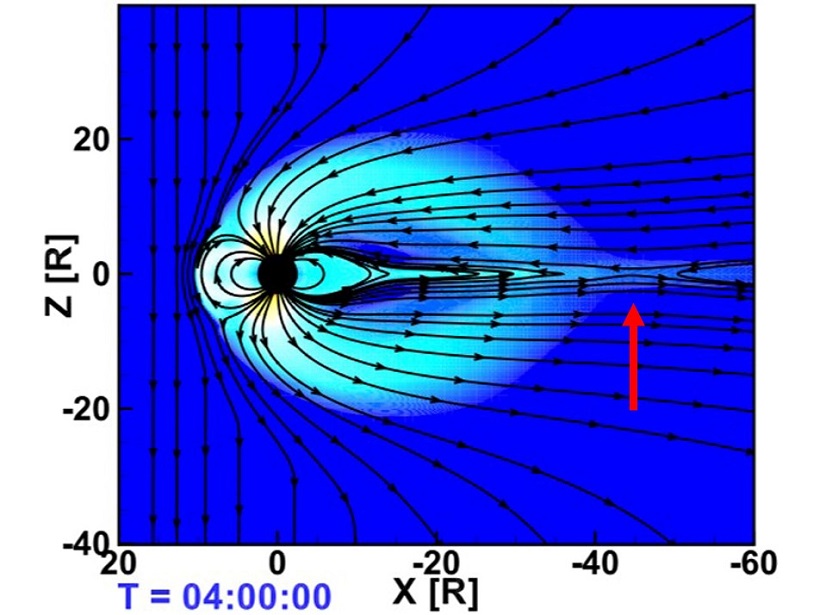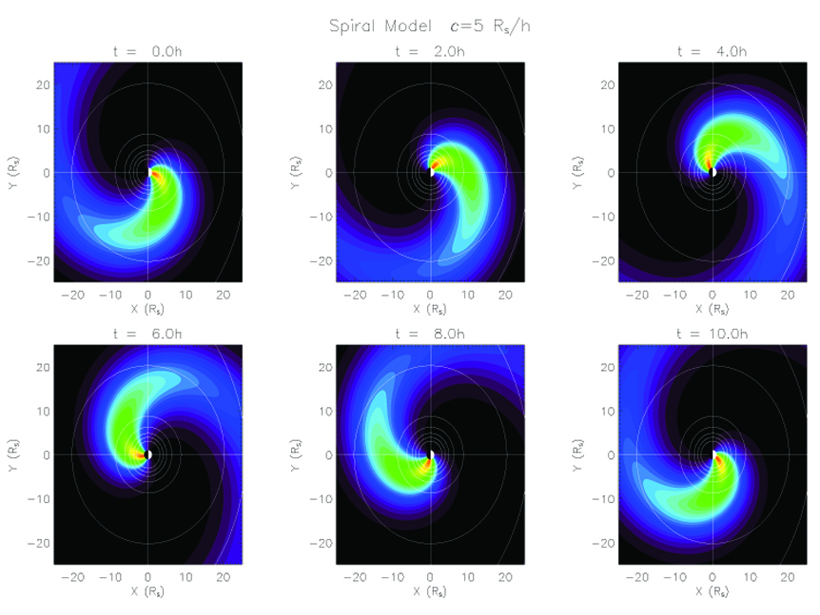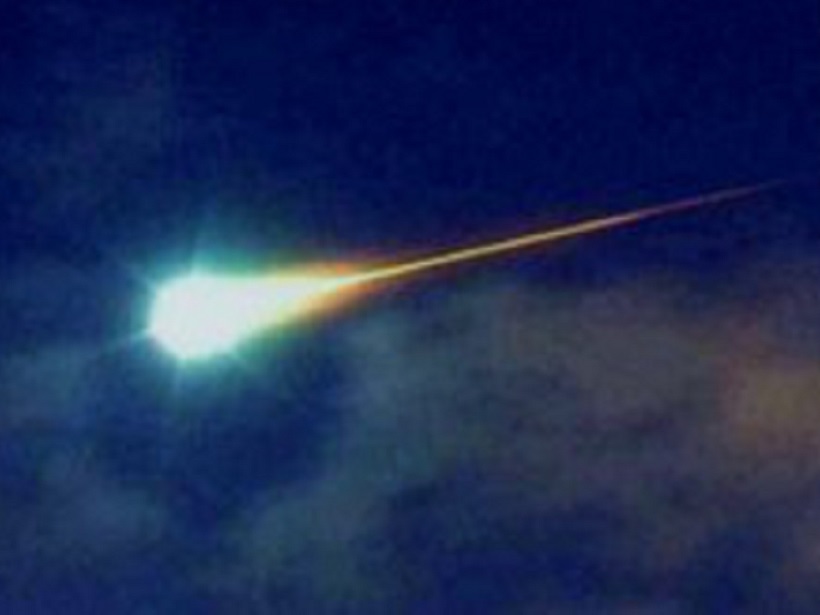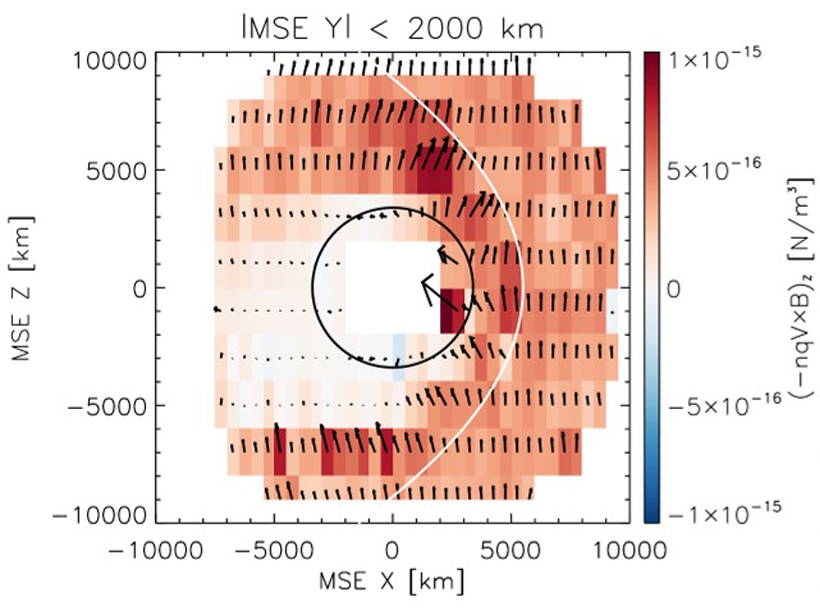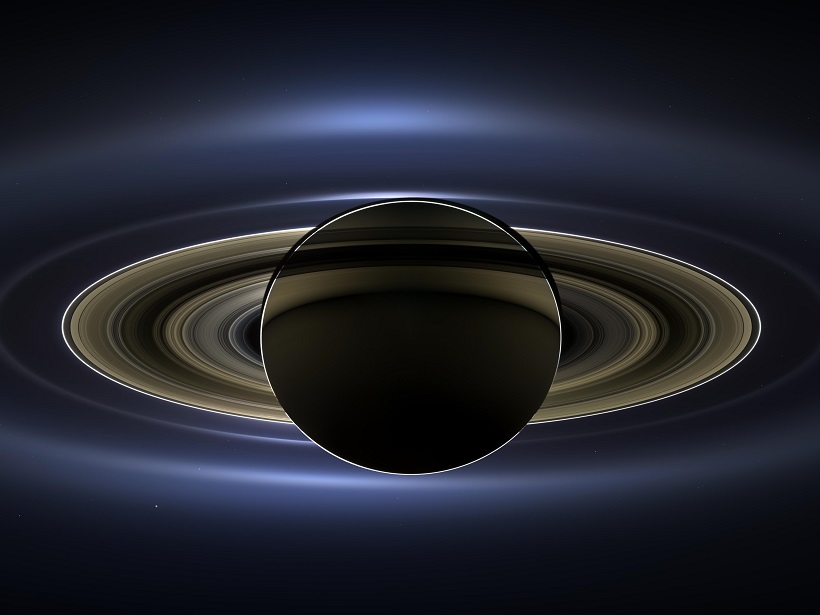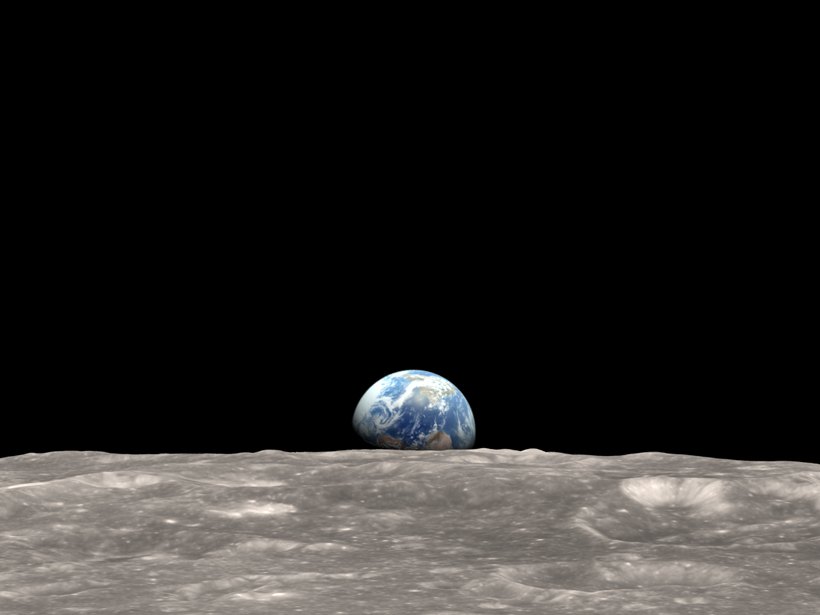Pancaking and erosion can explain a lot of the structural change in magnetic flux ropes as they fly evolve during their supersonic flight through the inner solar system.
Michael W. Liemohn
Evidence That Earth’s Forehead Controls the Wagging of its Tail
Yes, Earth has a tail, a magnetotail, and there is debate about how much Earth’s upper atmosphere plays a role in the controlling the dynamics of this region of space.
A Close-in Look at Saturn’s Periodic Space Bubble
When it comes to Saturn’s space environment, summer wins over winter in controlling the periodic flows of electrically charged particles and magnetic fields.
Airborne Fireball
A surprise sighting of a meteor in the sky above southeast Michigan.
Where the Solar Wind Meets Mars
A comprehensive look at how the solar wind is diverted around Mars, including the relative strength of the three biggest forces at work in this region.
The “Magnetic-less” Magnetotail Boundary
Most boundaries in space are governed by magnetic fields, but not far behind the Earth, where the field change across the magnetopause plays very little role in the pressure balance relationship.
Cassini’s Legacy in Print
With over 750 papers published in AGU journals based on Cassini-Huygens mission data, three editors select some of the most noteworthy.
New Findings from Old Data
Recalibrated and reanalyzed data from the Voyager flybys of Jupiter 40 years ago, presented in a series of papers in JGR: Space Physics, show the value of archival data.
Earth and Space Science for the Benefit of Humanity
A collection of Commentaries published in the journals of the American Geophysical Union illuminate the deep and growing benefits of research in the Earth and space sciences for humanity.
Even the Magnetosphere Has Problems
In a new conference and collection of papers, international space physicists narrow down the enigmas that puzzle magnetospheric science.


